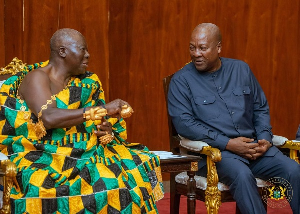The debate over the creation of the 45 constituencies has so far been one for the Lawyers and the Judges. However, the outcome of the case, if properly founded, should be determined by the mathematics, as specified in the Constitution. My ‘mathematical’ curiosity (if there is anything like that) has been aroused by the Table on the EC’s website on the regional distribution of the proposed constituencies set alongside the Constitutional stipulation. Thus, at the risk of being ‘flogged’ by those in favour of the creation of these many additional constituencies, it is worth discussing the mathematics and I hope Ghanaian mathematicians will join the debate.
What does the Constitution really specify that the EC does during a review of the boundaries of constituencies? Article 47 essentially prescribes the following:
(1) Ghana shall be divided into as many constituencies as the Electoral Commission may prescribe;
(2) No constituency shall fall within more than one region;
(3) The boundaries of each constituency shall be such that the number of inhabitants in the constituency is, as nearly as possible, equal to the population quota;
(4) The number of inhabitants of a constituency may be greater or less than the population quota in order to take account of means of communication, geographical features, density of population and area and boundaries of the regions and other administrative or traditional areas;
(5) The Electoral Commission shall review the division of Ghana into constituencies, and may, as a result, alter the constituencies;
(6) Where the boundaries of a constituency are altered as a result of a review, the alteration shall come into effect upon the next dissolution of Parliament; and
(7) The "population quota" means the number obtained by dividing the number of inhabitants of Ghana by the number of constituencies into which Ghana is divided.
From the above, the power of the EC to alter constituencies is not in doubt. Where the Constitution is unhelpful is how the “population quota” is determined. Unlike the Local Government Act which specifies the minimum population that falls under Municipal, Metropolitan and District Assembly areas, in the case of constituencies, the size or quota (in terms of population) is left to be determined by the EC. The EC thus has the discretion to either fix the quota in order to determine the number of constituencies; or to fix the number of constituencies in order to determine the quota.
The crux of the current debate is how the EC arrived at the number 45 for the new constituencies. The EC is quoted in a number of sources as saying that this was to match the number of new districts created by the government. It is, however, glaring from the constitutional stipulation that the number of districts does not explicitly have a bearing on the number of constituencies. If the EC persists in this explanation, it is my view that it shall be found wanting by the Constitution. In fact the Constitution, in Article 242(b), in specifying membership of District Assemblies, envisaged a situation where a district may fall within more than one constituency.
Apart from the objective calculations that can be done with the population and the number of constituencies, the Constitution does not specify how the EC is to take account of the other factors that together may lead to the number of inhabitants of a constituency varying from the population quota. This is again left to the discretion of the EC to interpret perhaps with the cooperation of other stakeholders. In this wise, I am with those who are calling on the EC to publish a document that will explain how it has considered (or ignored) all of these factors. This should have been done since 1992 subject to reviews as well. I have picked scanty bits of information (during online discussions) that the modalities have already been determined by a Judge (Justice Serebour). If that is the case, that judgement should also be made available on the EC’s website as part of what is guiding it in demarcating Ghana into constituencies. The fact that it appears such a document is not available is regrettable but it is not too late to rectify it.
Coming back to the EC’s Table on how the 45 new constituencies are distributed among the regions, it is clear the EC only took into account the Regional land area and population size. It has calculated weightings for land area, which it added to weightings for population size to arrive at final regional weightings. Is this approach of adding the weightings mathematically correct or should the weightings rather have been multiplied to arrive at composite weightings? This is a question for the mathematicians. Another flaw with the EC’s table is the fact that the new (total) population has been used to distribute only the 45 new constituencies and not the entire 275. By using the new (total) population figure for distributing the 45, the EC is making the wrong assumption that the populations of all the regions grew by the same percentage; hence the population weightings that existed with the 230 constituencies and the old regional populations still hold with the new regional populations and the 275 constituencies. I do not think this is mathematically correct.
Lastly, the table is woefully inadequate in explaining what guided the EC and why it chose to ignore some of the other factors (e.g. population density, which could easily have been calculated) that should have been taken into account. Our public institutions should not be averse to put out information for the perusal of the public it serves. Had the EC provided some explanation with the table, it could have convinced a lot more people about its intentions and certainly would have enjoyed a lot more support than the current partisan one.
I have no view one way or the other on whether the new constituencies should be created or not, even though it appears to make no economic sense. However, if the EC persists in its determination to go ahead, it should do the proper thing. It should at least demonstrate that it got the mathematics right. It should publish this in a document explaining how it arrived at the number of constituencies and how they have been distributed among the regions. This will serve to pre-empt the actions in the courts and would also serve as a historical record that would help guide our future actions as we strengthen our fledgling democracy.
On the mathematics alone, I am with those in Court to seek explanations. Long live Democracy in Ghana!
Dr Yaw Ohemeng
Manchester, UK
Opinions of Tuesday, 25 September 2012
Columnist: Ohemeng, Yaw














